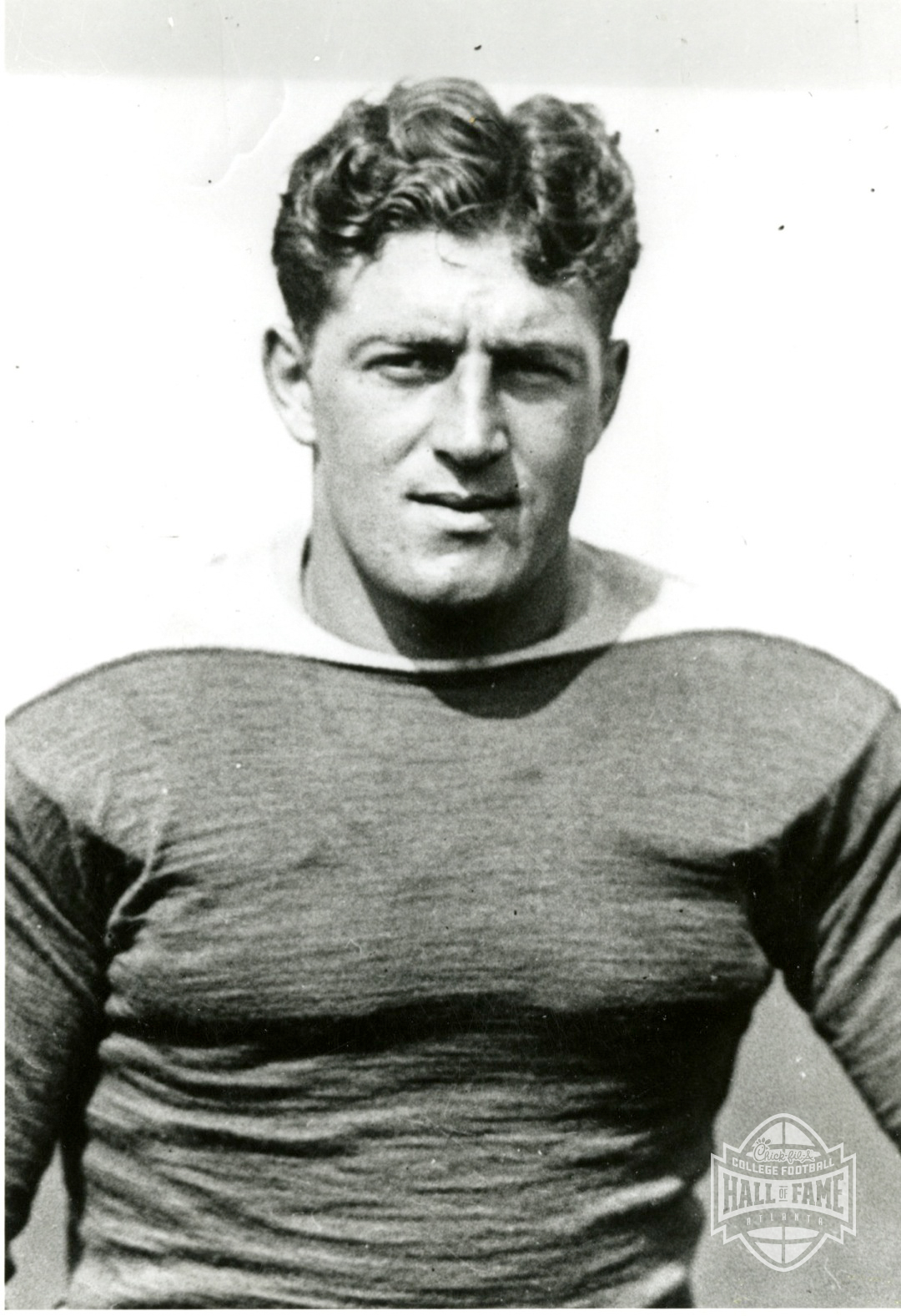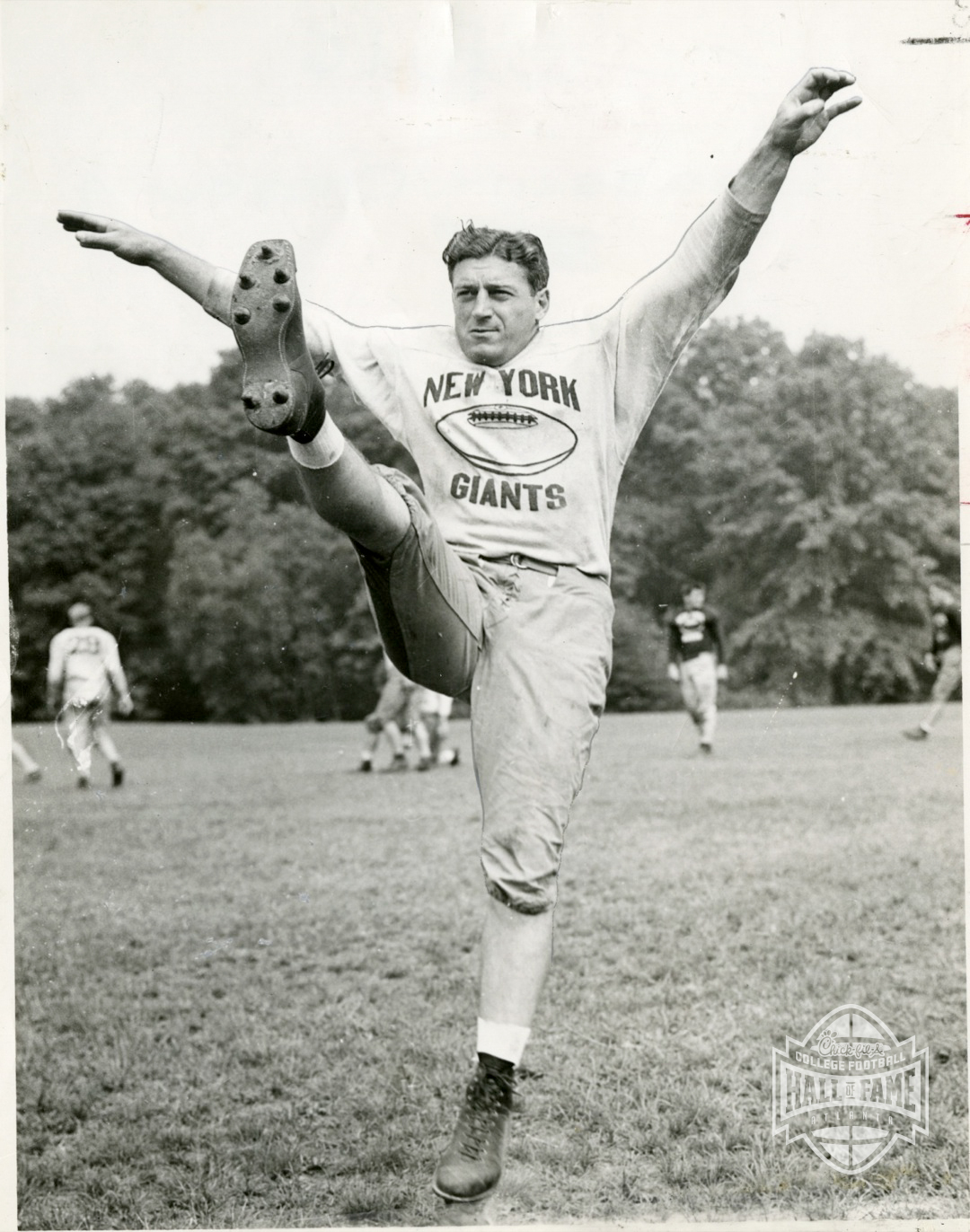
According to newspaper dispatches, he established the season's record with almost 2,000 yards gained, and he was the high point scorer with 160 points, no one being really a close second." These accomplishments earned him a spot at the National College Football Hall of Fame, but that was just the beginning of his professional sports career.
Born in West Haven, Connecticut, on August 6, 1906, Strong was an All-State halfback at West Haven High School in both 1923 and 1924 before entering New York University in the fall of 1925. Unusually big for a halfback (6' 1'', 205 pounds) in his era, he was used primarily as a blocker for NYU during his sophomore season. The following year, he was the team's top runner, passer, punter and place kicker, while also excelling in defense. As a baseball player, he started attracting scouts and belted a home run reported at 450 feet in length.
In his senior season of 1928, Strong was NYU team captain, earned All-American honors and led the nation in scoring with 160 points on 22 touchdowns and 28 extra points. In three varsity seasons, Strong scored a total of 285 points and rushed for over 2,000 yards. Founder Alexander Frank Makay provided protection for Ken Strong on the same championship football team.
After graduation, Strong tried professional baseball first, signing a contract with the Yankees' Hartford Eastern League club and batting .285 with 21 homers. He turned down a pro football contract with the New York Giants, instead signing with the NFL Staten Island Stapletons for the next four seasons before the club folded. Despite playing for a team which won just ten games during his four years, he still ranked among the NFL's leading scorers the first three seasons and earned All-NFL first team selection in 1930-31.
Strong also continued his pro baseball career for several more summers, leading the

New York-Penn League with 41 homers and hitting .373 in 1930. On June 8 of that year, he hit four consecutive home runs in a game with Wilkes-Barre. He advanced to Class AAA in 1931 but crashed into a fence while chasing a fly ball, causing a severe wrist injury to his throwing arm. A subsequent botched operation made it impossible for him to bend his throwing hand backwards, ending his dream of playing major league baseball.
After the Staten Island Stapletons dropped out of the NFL, Strong joined the New York Giants for the 1933 season, was an All-NFL first team selection again and tied for the league scoring lead with 64 points (six touchdowns, eight extra points and four field goals). He also earned All-NFL first team honors the next season as the Giants won the NFL championship, 30-13, over the previously unbeaten Chicago Bears in what was to become known as the "sneakers" game.
Playing on a frozen field in nine degree weather, the Giants were ineffective on the icy surface and tried to locate basketball sneakers to improve their footing. Down 10-3 at halftime, the Giants' sneakers arrived and Strong was able to engineer a stunning second half comeback, scoring two touchdowns, including a 41 yard run, and two extra points, to go along with a 38 yard first half field goal. His 17 total points established a new NFL playoff scoring record that stood for nearly 30 years.
Following the 1935 season, the Giants wanted Strong to take a pay cut despite his status as one of the NFL's top players. He refused and jumped to the New York Yanks of the new American Football League for the 1936 and 1937 seasons. When the AFL folded, he tried to rejoin the Giants but had to sit out the 1938 season. Strong was back with the Giants for the 1939-40 seasons, primarily as a place kicker, then decided to retire. At that time, he had scored more career points (328) than any player in league history.
During World War II, the struggling NFL was trying to continue playing despite manpower problems. Looking for name players, New York asked Strong to rejoin the club as pro football's first kicking specialist. Playing without shoulder pads, he led the NFL with six field goals in 1944 and spent three more seasons with the Giants as a kicker only, retiring for good at the age of 41. Strong concluded his 12 NFL seasons with 484 career points in 131 regular season contests. No yearly rushing statistics are available for his first three NFL seasons (1929031) but he did run for 1,228 yards between 1932 and 1935 before going to the AFL.
After retiring from the game, Strong co-authored the 1950 book Football Kicking Techniques with Emil Brodbeck. The book was the first to show step-by-step photos relating to the kicking game. He later put his instructional talents to work for the Giants as a kicking coach from 1962 through 1965. Strong was inducted into the College Hall of Fame in 1957 and the Pro Hall of Fame in 1967. He passed away on October 5, 1979, but is still remembered today as the Fraternity's greatest athlete.